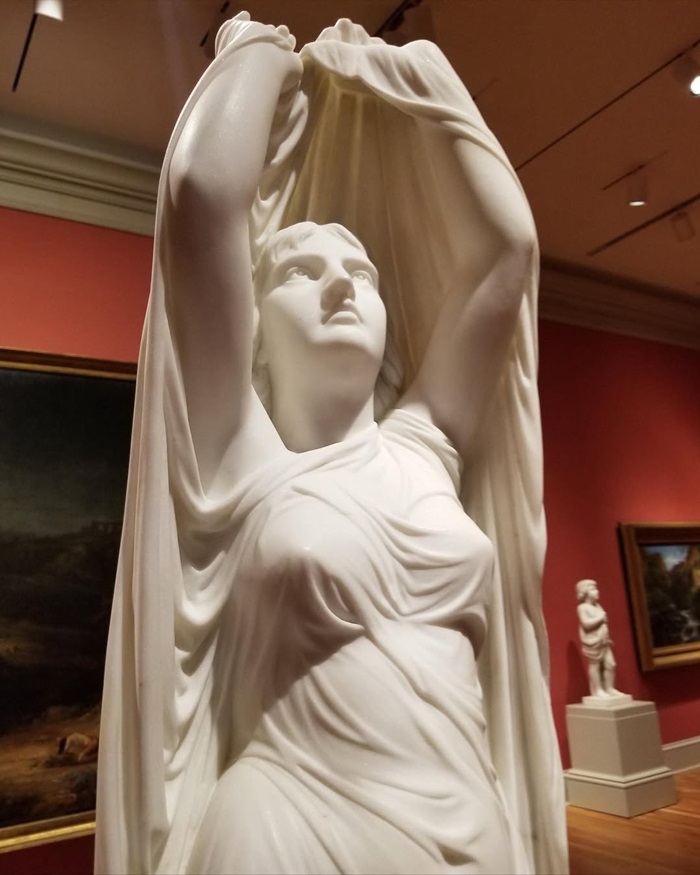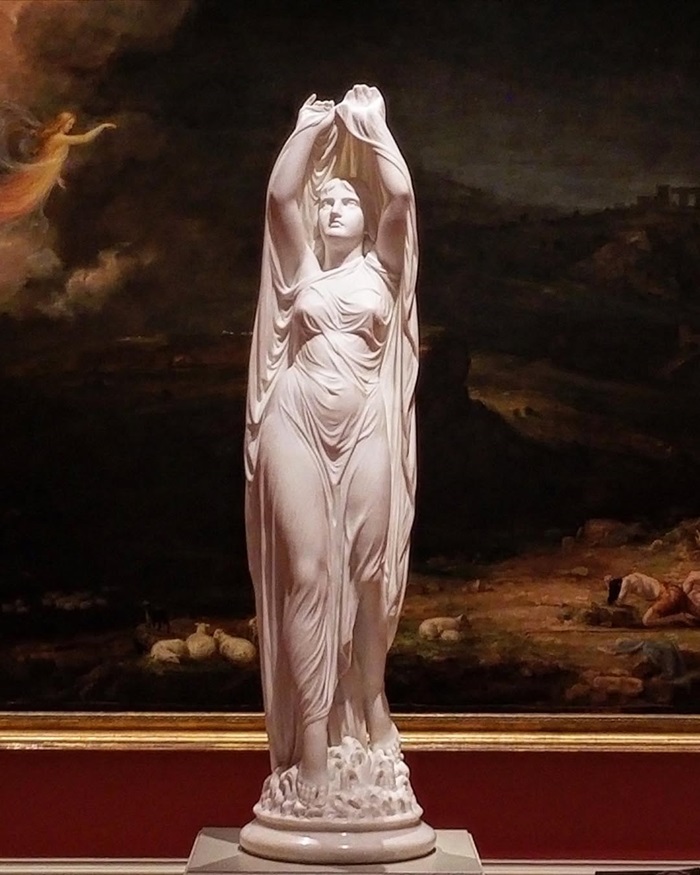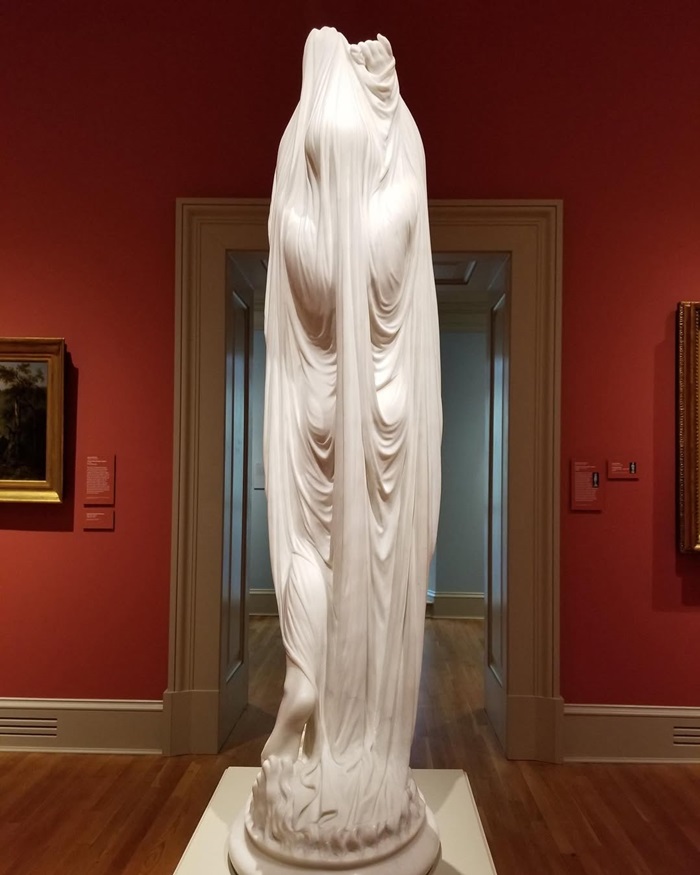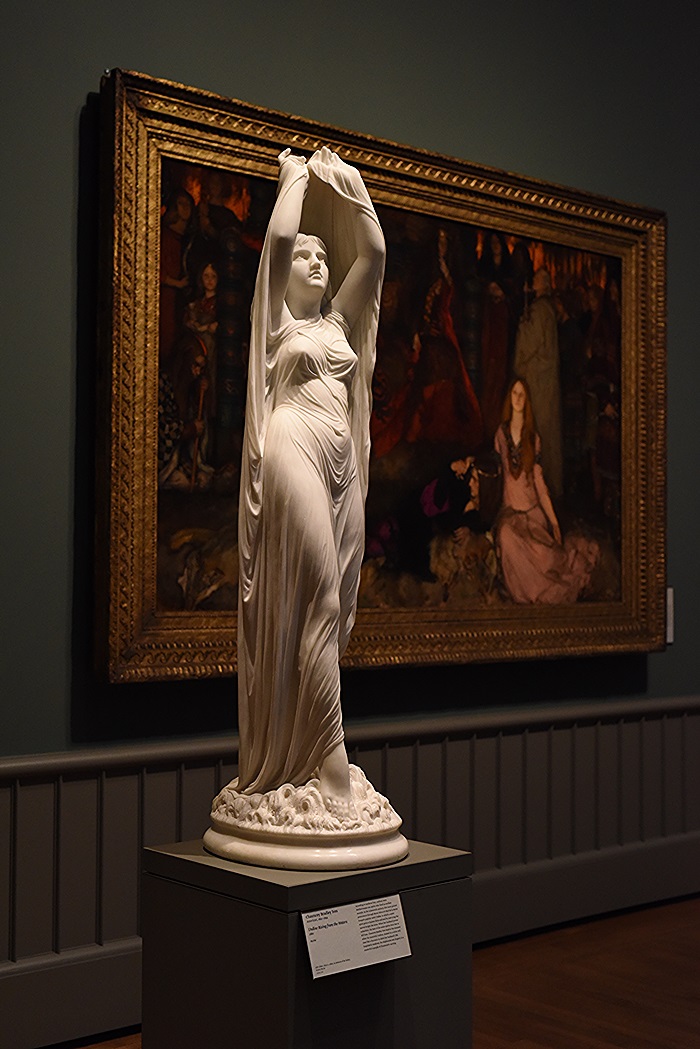Ondine was the kind of being who seemed made of water and light. A nymph of the streams and springs, free as the currents she traversed and as ethereal as the dew at dawn. Her beauty was said to be unmatched, but it was her untamed spirit that truly made her unique. She lived surrounded by nature, conversing with fish, playing with the leaves that fell into the water, and dancing with the reflections of the sun. She needed nothing more than her freedom.
The Forbidden Love of a Nymph and a Knight
But the world of nymphs is not immune to human passions. Despite their distrust of men—because all nymphs knew that loving one of them could be their downfall—Ondine could not help but feel attracted to Palemon, a young knight who often walked near the stream where she lived. At first, she merely observed him from a distance. She watched him walk among the trees, pause to listen to the murmur of the water, and toss small stones into the river, preoccupied. He was not like the other men who passed by without looking. Palemon seemed to hear the whisper of the forest, as if he understood the language of the water.
And it was that detail, that simple attention to nature, that captured Ondine's heart.

The Vow of the Vigil
Little by little, she began to get closer. At first, Palemon felt that someone was following him, although he never saw anyone. Until one day, when he bent down to pick a flower by the stream, he saw her reflected in the water. Ondine, with her long hair falling like waterfalls over her shoulders, looked at him with curious eyes. Palemon was fascinated. From that moment on, he sought her company day after day, and she, vanquished by love, stopped hiding.
Love was inevitable. Palemon broke his engagement to a young noblewoman named Bertha, someone with whom he had never felt the electricity that now coursed through him when he looked at Ondine. And the nymph, despite all the warnings about the dangers of loving a mortal, agreed to marry him. At the ceremony, amidst the murmur of the water and the song of the birds, Palemon made a vow that seemed pure and eternal: “Every breath of my waking will be my promise of love and fidelity to you.”
But human promises, even those sealed before nature, are fragile and often broken.
The Loss of Immortality and the Betrayal

In time, Ondine became pregnant and gave birth to their son. And with that birth began her own painful transformation. Nymphs, by giving themselves over to human love and creating mortal life, lost their immortality and part of their magical essence. Ondine began to age. It was not immediate, but the eternal freshness of her youth gradually faded, giving way to a more earthly, more human and vulnerable beauty.
And Palemon, like so many others before him, began to look away. The simple beauty and freshness of the court, where young women danced and laughed without worrying about the passage of time or maternal responsibilities, recaptured his eyes. His old habits and appetites returned, and soon his gaze fell once again on Bertha, his former fiancée. She was there, waiting, with the cruel patience of someone who knows that time plays in her favor and that a mortal’s loyalty is temporary.
Ondine, although now partly human, retained the magical sensitivity of the nymphs. She felt the change in Palemon even before she saw it with her own eyes, like a change in the water temperature of the stream that was once her home.
The Execution of the Promise
But it was one day, while walking near the stables, that the betrayal was laid bare. She heard her husband's familiar snoring and, smiling tenderly, thought of waking him to take him home. But upon entering, her heart shattered into a thousand pieces. There was Palemon, asleep in the hay, embracing Bertha, their clothes scattered on the floor.
The betrayal was not just of conjugal love. It was of the sacrifice she had made. Ondine had given up her immortality and divine essence for him. She had surrendered her youth, her freedom, and her eternal life. And now, he slept peacefully in the arms of another.
Ondine’s fury was silent at first, but with the force of a mountain storm. She walked up to him, leaned down, and with a sharp motion, woke him. Palemon opened his eyes and found before him the nymph he had loved, now different, with pain and sentencing etched onto her face. Before he could utter a word, Ondine whispered her cruel and perfect curse:
“You promised me faithfulness with every breath of your waking and I accepted that promise. So be it. As long as you are awake, you shall breathe. But should you ever fall asleep, that breath shall leave you.”

The Origin of Ondine's Curse: The Truth Behind the Myth
From that moment on, Palemon could never sleep again. Sleep, that human refuge and biological necessity, became his mortal enemy. Every time his eyes closed and his body yielded to exhaustion, his breathing stopped, forcing him to wake up again and again. He lived in a constant state of vigil and agony, trapped between life and death, paying the exact price for his betrayal.
This myth, full of beauty and tragedy, gave its name to a rare and severe medical disorder known as “Ondine’s Curse” or Congenital Central Hypoventilation Syndrome (CCHS).
Ondine's Syndrome, or Congenital Central Hypoventilation Syndrome (CCHS), is a rare and severe form of failure of the autonomous control of breathing, which is managed by the central nervous system. In essence, individuals with this syndrome lose the ability for the brain to remind the lungs to breathe automatically (without conscious control) when the person is asleep or at rest. Severe apneas occur during sleep that can lead to cardiorespiratory arrest and, thus, sudden death. Now you know where the name comes from, recalling Palemon's condemnation to perpetual wakefulness.
Although the myth of Ondine became popular in German and French literature during the Renaissance and Romanticism, its enduring quality lies in the way it encapsulates the fear of betrayal and the fragility of mortal life.
Chauncey Bradley Ives' Sculpture: The Acceptance of Pain
Ondine’s story, with its blend of unconditional love and implacable punishment, inspired many artists, from writers to composers (like Ravel and Debussy). But it was the American Neoclassical sculptor Chauncey Bradley Ives who captured that final moment of the legend with unique delicacy.
In his 1880 marble sculpture, Undine Rising from the Waters, the nymph emerges from the water, wrapped in a translucent veil that seems to float, as if she still belonged to the liquid world from which she came. Her figure is slender, almost unreal, and there is a serene sadness in her expression.

Ives, instead of focusing on the nymph's fury or rage, chooses to represent the moment of resignation and sublime sorrow. It is not fury that dominates the scene, but the lament of someone who has loved too much and lost her home, her eternal life, and her love. Ondine rises like a memory, like a spirit that belongs neither to the world of humans nor to that of the nymphs. It is the instant when the pain of love turns into legend.
Ives' technical mastery is evident in the way the marble (a hard, cold material) manages to convey the softness of the skin and, most notably, the transparency and lightness of the water and the veil enveloping her. The artist succeeds, in cold marble, in transmitting the warmth of that tragic love and the fragility of human vows. His Undine is not just a mythological figure. She is the eternal representation of the sacrifices we make for love... and the relentless consequences of betraying those promises.
THE WORK
Title: Undine Rising from the Waters
Artist: Chauncey Bradley Ives
Creation: 1880
Technique: Marble Sculpture
Location: Yale University Collection, New Haven (USA)



